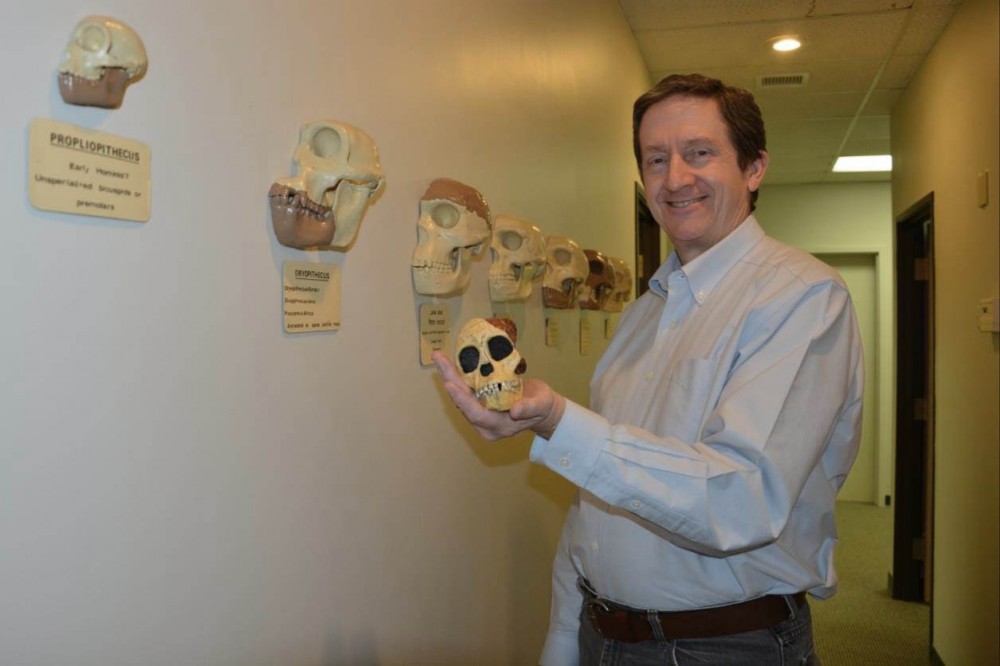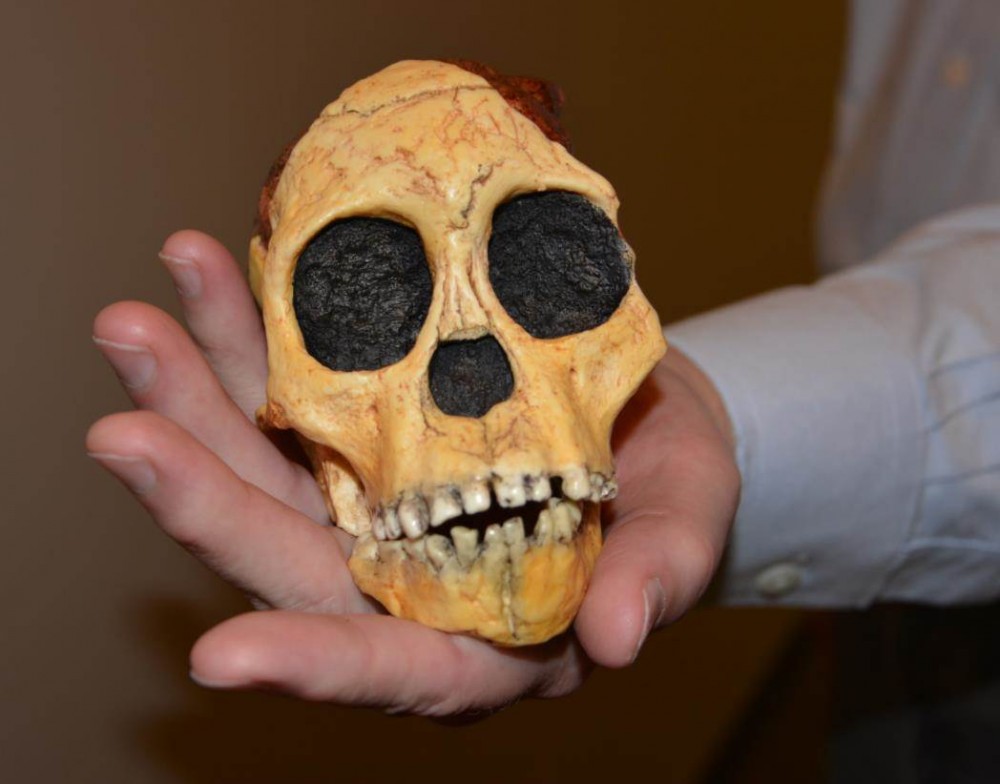Today marks an important anniversary in the history of our understanding of the deep human past. On this date in 1924, the face of a three-and-a-half year old child emerged from the rock in which it had been concealed.

Curator Brad Lepper holding a modern replica of the Taung child’s skull in the “Hall” of Human Evolution.
Raymond Dart, a professor of anatomy at the University of Witwatersrand in Johannesburg, South Africa, had been patiently chipping away at the rock with his wife’s knitting needles, which he had sharpened for this delicate work. He later wrote that no diamond cutter ever worked more lovingly or with such care on a priceless jewel. Finally, on December 23rd, the rock parted What emerged was a baby’s face I doubt if there was any parent prouder of his offspring that I was of my Taung’s baby on the Christmas of 1924. This extraordinary child had lived and died in Africa nearly three million years ago. It became the first documented representative of the species Australopithecus africanus. Dean Falk, in her fascinating new book The Fossil Chronicles, claims that the Taung skull is one of the most (if not the most) important hominin discoveries of the twentieth century. According to Philip Tobias, the discovery of the Taung child’s skull effected a revolution in our understanding of human evolution. At this point, you might be asking yourself, why, if this little boy or girl (its hard to make a definitive identification of sex from so young a kid, especially when all you have to work with is a skull), lived in Africa almost three million years ago, am I reading about it on a blog devoted to Ohio archaeology? Some months ago, while going through some unlabeled boxes in the Ohio Historical Society’s Archaeology Collections Facility, we came across a box containing several models of the skulls of selected human ancestors. So, evidently, back in the 1960s, the Historical Society embraced telling the story of human evolution as part of our mission. That story began in Africa, but it now encompasses the entire world including Ohio. All Ohioans, including the descendants of Ohio’s indigenous people, are related to this incredibly ancient South African child. So her (or his) story belongs as much to Ohio as it does to South Africa, because it belongs to the world.

Modern replica of the Taung child’s skull – a face from the past.
William Kotzwinkle, in his novel, The Leopards Tooth, captured brilliantly the reason why the recovery of such ancient human remains, is so universally important. An early paleoanthropologist, the fictional Sir Henry, is explaining to young Charles the importance of his work using the regrettably typical gender-biased language of the period: “The old bones we seek, Charles, are the clues to what our ancestors were like. When you touch one of those bones when you open the ground and see it there before you, as it has lain for a million years well, you suddenly feel as if you were that ancient man. It is my belief,” said Sir Henry, stooping to wash his face in the water, “that we carry the traces of these men within us.” “But how, Sir Henry?” “You and your father have certain physical characteristics in common. And your grandfather, Charles, I’ve seen his picture. You resemble him too. If we could see your great-grandfather and your great-great-grandfather, we’d find other similarities. You are all these men, Charles. They’ve passed their life on down to you. In a very real way, my boy, they live in you.” Sir Henry stood up from the stream. “So when you touch one of the ancient bones, the ancient men in you respond. That is the thrill of hunting these bones, Charles, that is what draws me. That moment of awakening, when our ancestors speak to us once again, is more wonderful than anything I’ve ever known. And I want all men to know that feeling, Charles. I want to show them their past and make it live.” As for those models of the skulls of ancient humans from the old exhibit they’re now hanging at the Archaeology Collections Facility in our own Hall of Human Evolution. Brad Lepper For further reading Falk, Dean 2013 The Fossil Chronicles: how two controversial discoveries changed our view of human evolution. University of California Press, Berkeley. DeSalle, Rob and Ian Tattersall 2012 Human origins: what bones and genomes tell us about ourselves. Texas A&M Press, College Station.